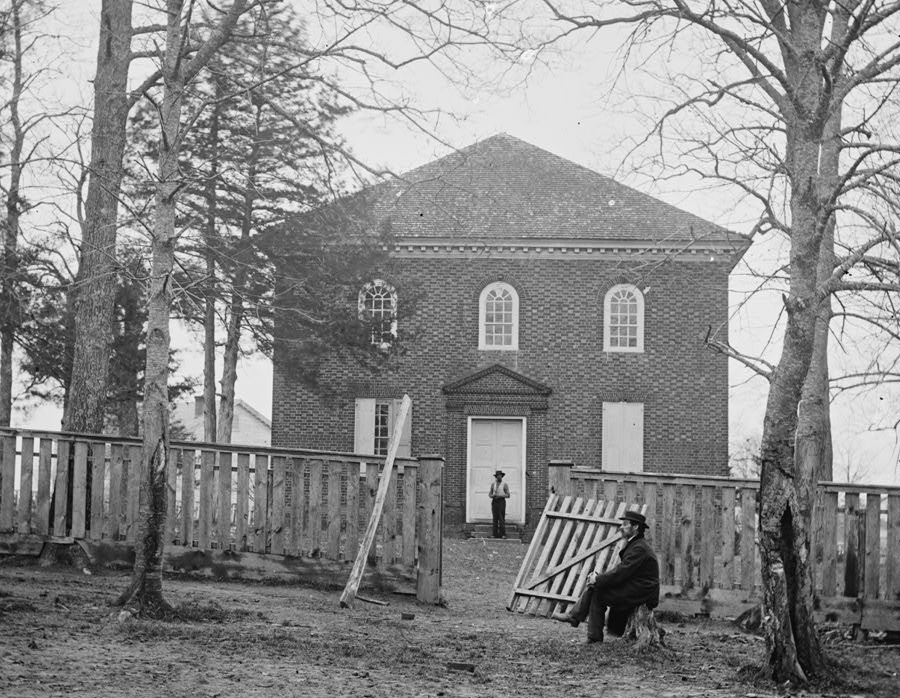
in colonial times, local voters elected the vestry for Anglican parishes only once typically and members of the vestry then chose their replacement
Source: Library of Congress, Falls Church, Va. The Church (shown during Civil War)
The Anglican Church was officially "established" in Virginia. Government and religious authority were united in the king ever since Henry VIII split from the authority of the Pope in Rome. In 1619, King James I was head of the Anglican Church was well as the English government; there was no separation between church and state.
Local church costs were funded by local taxes throughout the colonial era. A vestry, typically a dozen men, governed the local parish, which could consist of an entire county or just a geographic portion. The General Assembly was responsible for creating new parishes.
The vestry set a local tax rate to generate the funds required to pay the minister, maintain churches, and provide welfare services to the poor, the orphans, and the insane. That tax rate could exceed the rate established by the county court, especially if the vestry decided to build a new church building.
Those who qualified as voters within the boundaries of a new parish elected the initial members of a vestry, to govern each parish. Verstries were separate from county courts. They served as the powerful colonial equivalent of a modern county's Department of Social Services.
The vestry, typically a dozen men, would govern that particular parish. They ensured someone would care for orphans, pay for the costs of raising bastards when men denied responsibility, and maintain church buildings. The local vestry selected the minister for that parish, by awarding and renewing annual contracts. The commissary in Williamsburg, representing the bishop of London, was unable to get parishes to relinquish their power and grant ministers a lifetime appointment.
Members of the vestry served until they resigned or died. Local residents in the parish voted only for the initial vestry. When a vacancy occurred, only the remaining members of the vestry selected the replacement.
A vestry was occasionally dissolved by the General Assembly and replaced, in which case a new election would be held. Those unusual circumstances were usually based on accusations of inappropriate behavior by the vestry, such as financial improprieties.1
Vestries had the authority to choose the minister for their parish. The congregants in a parish, as well as the commissary of the bishop of London, might try to influence such a selection, but in colonial Virginia the vestry had complete authority to choose the minister. The vestry was made up of the leading men in the parish, and they hired ministers on annual contracts. Any minister who used Bible verses to challenge the stratified society, with unequal opportunity and unequal incomes, was putting his job at risk.
A vestry imposed its own tax on parish residents to maintain church buildings, pay ministers, and provide social services within its boundaries for orphans, bastards, and those unable to care for themselves.
The local sheriff collected the taxes for both the vestry and the county court, the local decisionmakers who had been appointed by the General Assembly and the governor. Though local voters never voted for the members of the county court or the sheriff until 1851, local voters did get to elect a vestry occasionally.
Separation of church and state was triggered by the American Revolution. The authority of the vestry to impose taxes was ended, and the Anglican church was finally "disestablished" in 1786. Today, individual Episcopalian congregations elect members of their own vestry at annual congregational meetings.2

in colonial times, local voters elected the vestry for Anglican parishes only once typically and members of the vestry then chose their replacement
Source: Library of Congress, Falls Church, Va. The Church (shown during Civil War)